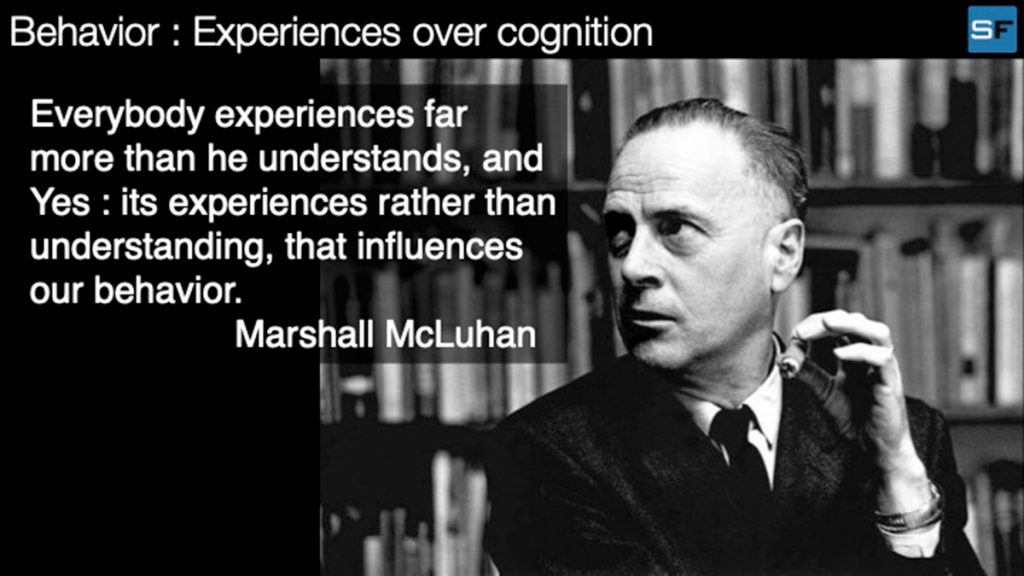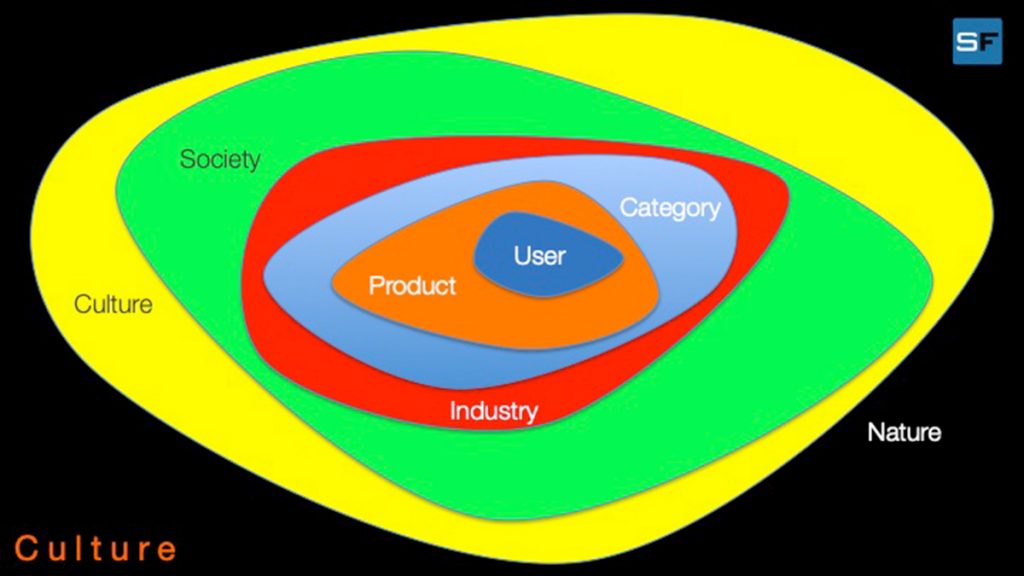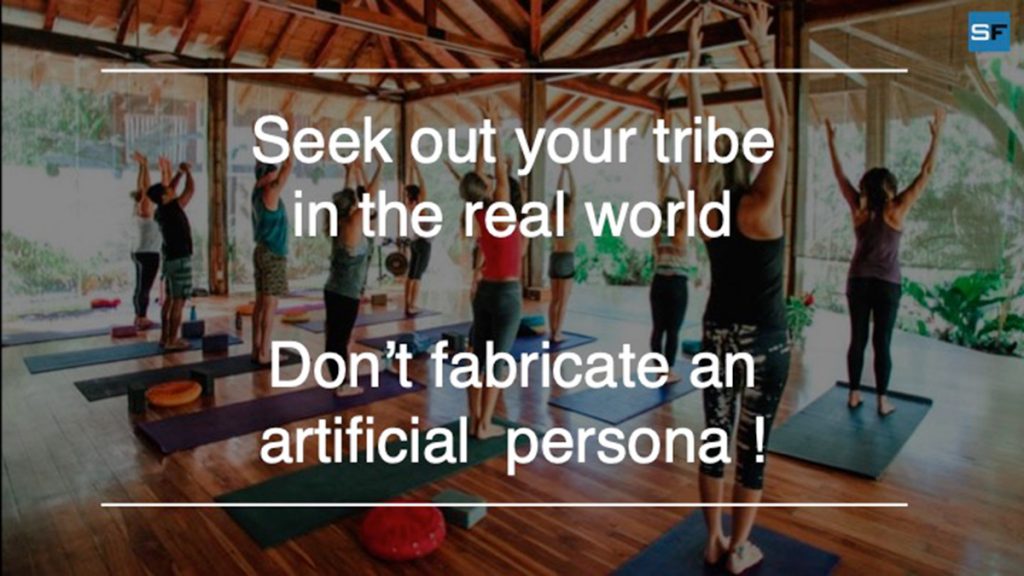
What makes your product successful?
At Sundberg-Ferar Product Innovation Studio, we believe that successful products are always designed as a blend of both functional and emotional attributes. As industrial designers, our overarching goal is to design every product or service we touch to be a bit better and a bit more beautiful for our clients.
So how do we bring these functional and emotional elements together in a product and “B something 2 someone”? That’s the big question this article aims to address.
Understanding the User and the Ecosystem
The first piece of the puzzle lies in understanding the user. We are all, to one degree or another, products of our experiences and influences. Growing up, we have all been endowed with ideas and thoughts from our families, friends, teachers, mentors, coaches – you name it! We’ve experienced good and bad situations that have molded and changed our behavior over the course of our lives. We are immersed and taught to think in the context of our culture. As sociologist and designer, Marshall McLuhan, said “Everybody experiences far more than he understands. Yet it is experience, rather than understanding, that influences behavior.” It is this behavior that influences how we perceive and interact with the world around us – including objects, products, and services.

In effect, at the center of everything is the user’s interaction with the product – whether the product is a washer or dryer, car, coffee machine etc. Both user and product are also influenced by the overarching category and industry, and these two, in turn, ultimately result from the influence of the society and culture at large. Of course, there is a lag time before the ever-changing culture trickles all the way down to the product. That’s exactly why part of what makes a successful product is looking at overarching societal trends to anticipate future needs and then infusing solutions to those needs into your product design. That way, your product already answers the needs as they emerge.
The objects we design should reflect the popular culture around us. George Nelson, Herman-Miller’s former design director, famously said, “Design is a response to social change.” For example, at Sundberg-Ferar, we designed a toaster last year. We’ve also designed toasters 40 years ago. A toaster is still a toaster, yet even this simple appliance has changed over the years as we’ve designed it in a changing culture. Toasters of today can be integrated into the Internet-Of-Things and have imbedded smart technologies to further anticipate the needs of the user – a far cry from the simple mechanisms of the decades past.

DEMOGRAPHICS
Even within the popular culture of today, your company must understand the needs of its target segment in order to create a successful product. You have to understand the value structures and behaviors of different generations and demographics. For example, if a company is trying to design one luxury vehicle for a baby boomer, and another one for a millennial, they must consider the differences in how these two people have been brought up and how they have each experienced “luxury” throughout their life. For a baby boomer, luxury might look like walnut veneers and chrome detailing inside the car. For a millennial, on the other hand, it may look like in-vehicle 6G connectivity and a dozen charging ports for all their devices.
PSYCHOGRAPHICS
Even demographics don’t tell you everything you need to know though. The puzzle is even more complex than that. All 60-year-old white males can’t consistently be clumped together. There’s no reason why a 60-year-old white male can’t have the same thought processes, lifestyle habits, and purchasing decisions as a 30-year-old Hispanic woman with three cats. You have to categories not just by demographic, but also by cognitive orientations, value structures, and behavior patterns in order to discern the attributes and benefits your users want in your product. In every case, it’s a matter of understanding the goal at hand for your product and how all the information on your user relates to it.
DON’T FABRICATE A PERSONA!
As we’ve seen, knowing your user is not as simple as defining an artificial persona. As a company considers their user, they must seek out a real “tribe” of people in the real world. You can’t just say, “My target user is a 27-year-old single mom with a townhouse”. We must approach the market with an open mind to actually see how different sub-cultures are evolving. If you’re designing a water bottle specifically for yogis, you have to go to that tribe and find out what matters to them, what compromises they’ll make and what compromises they will never ever make.

DON’T JUST ASK. UNDERSTAND.
Just going up to them and asking them isn’t enough either. If you go to a tribe of users and just ask them what they want in a product, it will be very difficult to get an answer you can use to build a successful product. Even unintentionally, humans will say something different than they think. They’ll think something different than what they feel and they will feel something different than what they do. Just asking won’t get you the answers you need to deliver a product that meets their needs and desires. That’s why in the industrial design process, we find out how users will behave by putting them directly in or as close as possible to the actual context in qualitative user research. Using design research methods, we don’t just listen to users words, but understand from them what they need and want. It’s very hard for a human to answer a question like what features they want in a vehicle 10 years from now. Humans can, however, explain in great detail the experience or emotion they want. Using robust design research to uncover these latent needs and desires will allow you to truly address them in your product.
SITUATIONAL INFLUENCE
As Professor Stanley Milgram proved, our external situation always overrides our internal ideals. The same human will act differently depending on the situation. A person will behave in one way at a coffee shop, and another way in a locker room. So it’s not just the ecosystem of the end user by his or herself, but also the ecosystem around the product, its use case, and the mental and psychological state this creates in the user as they interact with the product. You have to triangulate from these 3 angles – demographics, cognitive models, and psychological and physical context – to create the very best chances of success in your product.

NO DESIGN IS ABSOLUTE.
For example, let’s say you’re making a chair, and you ask, “Is it a good chair?” The answer also depends on these factors. If you take an Aston Martin seat – a beautifully designed seat – but set it in front of a desk in an office setting, it won’t work and becomes a bad product by virtue of the ecosystem surrounding it. If you take a wonderfully ergonomic Herman-Miller Aeron chair and use it for seating at a baseball stadium, it will again fail because of the ecosystem it’s in. That chair won’t hold up to vandalism, beer spills, cigarette burns, and graffiti that you’ll find in the stadium ecosystem. In this way, human-centric design is also context-centric design. In order to truly “be something to someone” in your product, you have to think about the user and the context together.
Multi-Users
Up to now, we’ve been mostly talking about the end user, how they behave, and their propensities, needs, and wants. The end user is not the only user you have to consider, however. You also have to consider all your stakeholders along the creative supply chain. This means understanding the needs and desires for your product from the perspective of the OEM, the manufacturers of your product, your customers, distributors, suppliers etc. Your product has to be aligned with the needs of all of these multi-users.
THE INHERENT ADVANTAGE
Most companies might be able to meet the needs of just one or two of these stakeholders with their product. Even that much is no easy task. However, it’s much more rare and much more difficult to create a product that is a win-win-win across all these stakeholders. Not only that, but it’s even harder for any would-be competitors to copy your product. Why? Because though someone else may be able to identify the same market opportunity that you’re pursuing, it’s almost impossible to copy the way you’re marrying your product with your existing operations, business acumen, and stakeholders. If you can do this, you’re untouchable, and you’ve truly created a great product.
Embrace Polarization
Most companies set out to design a product that everyone loves. What they end up with is a product that nobody hates! What we have to realize is that as long as your target stakeholders love your product, it’s okay if those outside your target hate the product. Understand what you’re good at – your technical capabilities and business competencies – and align your focus to state, “This are the specific user tribe we want to attract to our product”. Maybe the tribe you’re targeting wants a powerful, sinuous sport car, or maybe they want an eco-friendly hybrid, but understand “okay, this is what our segment will want from an eco-friendly car” or “this is what our segment will want from an 800 horsepower car”.

Stop trying to be all things to all people. Be something to someone! This also doesn’t mean you should only make one product. It means you should go ahead and make a full portfolio of products, making sure each one is aligned with your target tribe. Don’t dilute it with the desires of users who aren’t in your target, or conflicting desires of your colleagues from sales, marketing, engineering etc.
The Emotional Hierarchy
If you want your product to matter, it has to fulfill an emotional experience.
Consider Maslow’s hierarchy of human needs for a minute. This can be compared with the emotional hierarchy for product design. At the bottom of the pyramid are the concrete features of a product. Unfortunately, what we often see is that companies start and finish a product only ever having focused on designing feature sets. They stay in that bottom level and never move up in the emotional hierarchy. This will never create a product that is sustainable in the market. You must start from at the apexof the pyramid and first understand the ideal experience, emotions, and aspirations that your users and stakeholders want. At that point, you can then consider how that experience translates into benefits – meaning, the reason why a user desires this experience. Then you can translate those into the general attributes, and finally to the individual features of a product.
Don’t get me wrong, features are also extremely important. As Eames famously said, “The details aren’t the details; they make the product.” Before you focus on those details though, you have to make sure the broader architecture is set so that your product will meet the end user’s needs with the experience they are seeking. For example, if you’re designing a shoe for your user, you have to understand what they want to accomplish before defining features. Are they trying to make a fashion statement? Are they trying to run a marathon? Do they just want to go on beautiful Sunday evening strolls? In each case, the features will change depending on the experience the user desires.
Start by Being Something to Someone!
A successful product must take into account the functional attributes and also all of the emotional attributes for all the stakeholders. On the part of the end user, the product must be perceived as purposeful, meaningful, and compelling. On the part of the business the product must align with its values and stakeholders, it must be affordable, and it must be memorable in order to create brand loyalty. After all, your product is really the only honest container of your brand promise. Your company’s promise can’t only exist in your marketing campaigns. It has to be squeezed into your actual product. Even if you bring all the customers you want to the proverbial “watering hole”, they have to taste the water themselves and experience that it’s good. Good design is good business.

In the same way, your customers have to experience your brand promise in your actual product. It must incorporate all the factors we’ve covered here in order to have the emotional durability that will make it sought-after in the market. So as you design your next product, keep these principles in mind and whatever you do, remember: Don’t try to be all things to all people. Start by being something to someone!